Crafted in finely worked metal with openwork lattice design, the piece features an elaborate noble-style front decoration. At the center, an oval heraldic shield proudly displays two rampant wolves facing left, an unmistakable symbol of the Ayala family. This powerful lineage, closely tied to the king, armed and funded an elite troop of arquebusiers, giving this powder flask a historical context as fascinating as it is exclusive. Each soldier in that army carried a piece like this one, making it a tangible testimony of a time when honor, nobility, and gunpowder went hand in hand.
The interior retains its original red velvet lining, remarkable for both its color and integrity, especially given its age. At the top, a conical metal spout is equipped with a mechanical closure system in perfect working order. This mechanism allowed the arquebusier to load safely and precisely during combat, a crucial feature for military formations in Spain’s Golden Age. On the back, the flask preserves its mounting plate, designed to hook onto a uniform belt. Both the spout and the plate are in excellent condition, confirming the high quality of the original craftsmanship.
Though it bears the natural marks of time, such as minor wear to the velvet fabric and slight surface oxidation on some metal parts, these details, far from detracting value, enhance its authenticity and character. They are traces that speak of living history, of battles and marches, and of loyal service to the Crown.
An exceptional piece that not only embodies a powerful and decorative Renaissance aesthetic but also represents a unique opportunity for militaria collectors, historical museums, or enthusiasts of war-related art. Ideal for inclusion in an exhibition about the Spanish Golden Age, this antique powder flask would look magnificent in a private collection or as a centerpiece in a library or study with historical soul.
Don’t miss the chance to acquire a genuine 16th-century item with documented provenance and a close link to nobility and military power.
Dimensions: 25 x 20.5 x 4.7 cm (9.84 x 8 x 1.85 in)
History of the Spanish Powder Flask for Arquebusier
During the 16th century, the use of the arquebus as a portable firearm revolutionized warfare in Europe. Under the reign of Philip II, Spain established itself as a premier military and naval power, with troops adopting unprecedented technical and armament innovations. In this context, powder flasks—containers designed to hold black powder—became essential tools for soldiers. Often made of wood or metal and richly decorated, they served not only as practical items but also as symbols of identity and status.
The Ayala family, one of the most influential noble houses in Castile, maintained close ties with the Habsburg monarchy. Among its prominent members was Baltasar Ayala, a jurist and military man, and a personal friend of Philip II. Thanks to their wealth and influence, the Ayala family maintained a private army of around 400 arquebusiers, placed at the service of the Crown. These soldiers were outfitted with custom weapons, uniforms, and accessories, including powder flasks like the one presented here.
These pieces are valued not only for their military function but also for their historical and heraldic significance. Each carries the engraved Ayala coat of arms, signifying their connection to an elite unit. This type of customized armament reflects a time when nobility not only financed but also actively participated in the defense of the kingdom, linking power, warfare, and lineage. Today, powder flasks of this kind are found in museums and military art collections worldwide, standing out as rare objects that fuse technique, history, and beauty.





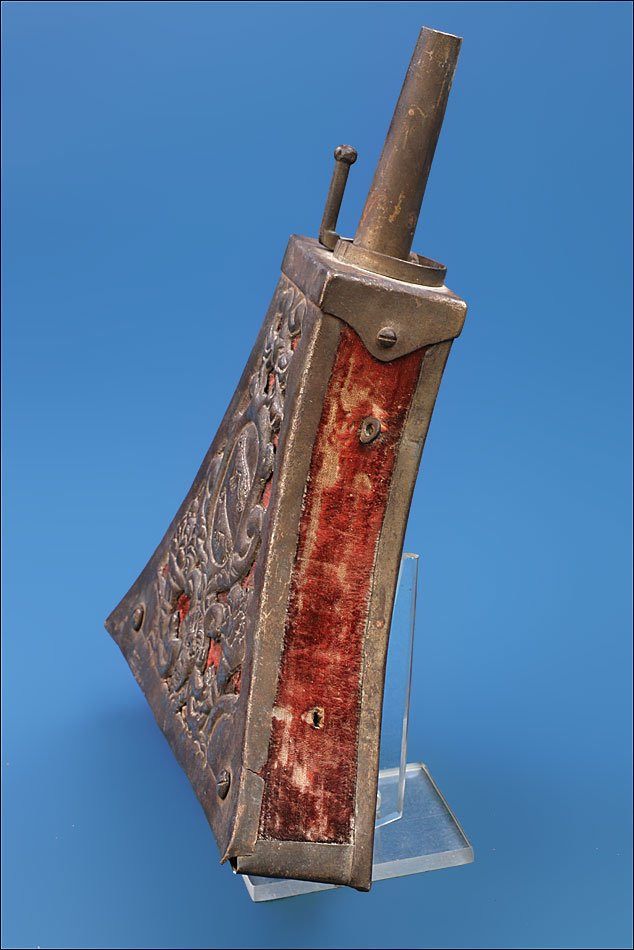

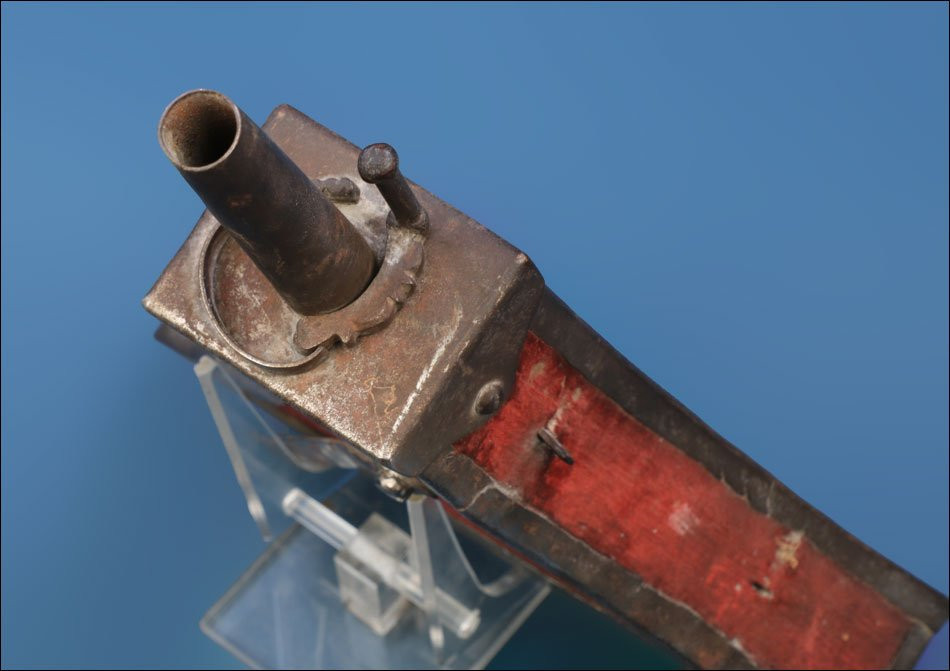
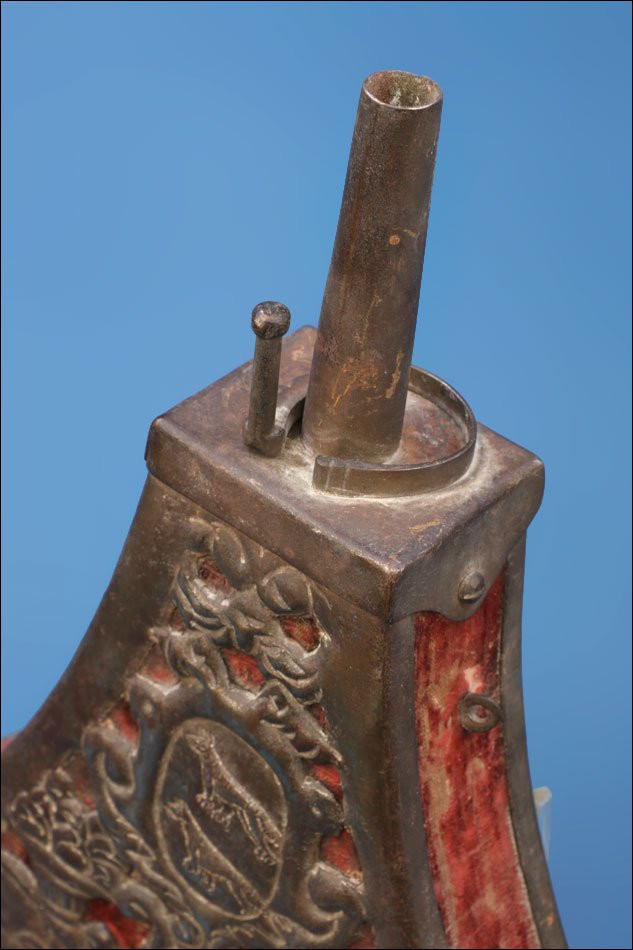

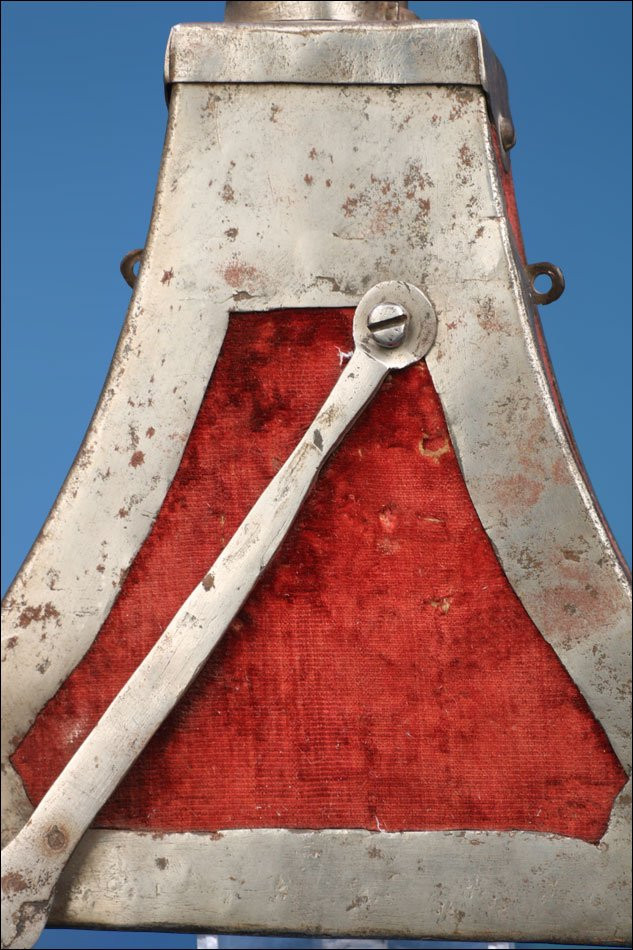























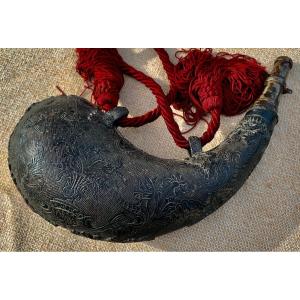





 Le Magazine de PROANTIC
Le Magazine de PROANTIC TRÉSORS Magazine
TRÉSORS Magazine Rivista Artiquariato
Rivista Artiquariato